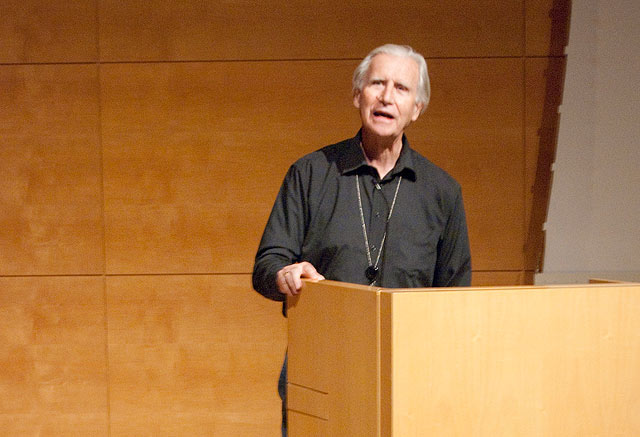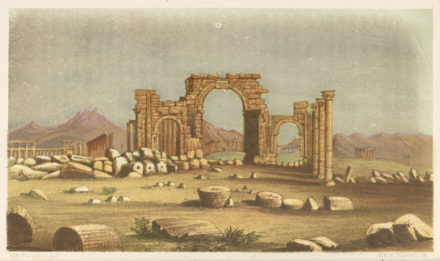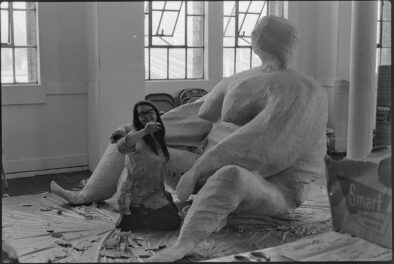How do you make a movie about Edward Hopper? The artist—famous for his haunting and enigmatic paintings such as Nighthawks and New York Movie—was conspicuously taciturn, speaking little about his work, giving few interviews, and keeping to a small circle closely monitored by his protective wife, Jo. When the Academy of Arts and Letters awarded Hopper its gold medal for painting, he gave a one-word speech: “Thanks.” Upon Hopper’s death in 1967, eight people came to his funeral.

Edward Hopper, Arnold Newman, 1941. Gelatin silver print, 36.7 x 45.2 cm (14 7/16 x 17 13/16 in.). Gift of Nina and Leo Pircher. © Estate of Arnold Newman
Artist and author Brian O’Doherty, a longtime friend of Hopper’s, was one of those eight. So when he set out to make a documentary about the artist, he had no desire to transgress Hopper’s silence. Instead, he embraced it. The result was the 1981 film Hopper’s Silence, a meditative visual essay that explores the majestic quiet that characterizes the characters, rooms, and streets in Hopper’s paintings, as well as the artist himself.
A scholar-in-residence at the Getty Research Institute this past spring, O’Doherty recently screened and discussed Hopper’s Silence and revealed its improbable origins in 1961, when O’Doherty found the artist’s name in the phone book and called to arrange a half-hour TV interview.
If Hopper had secrets, though, he wasn’t giving them away in any interview.
O’Doherty: “Are your paintings reflective of the isolation of modern life?”
Hopper: “It may be true. It may not be true.”
O’Doherty: “What do you think of your teacher, Robert Henri?”
Hopper: “I think he was moderately good.”
O’Doherty: “What draws you to the dark landscapes you paint?”
Hopper: “I suppose it’s just me.”
Hopper’s characters are intensely private, too. Not a single one speaks. Gazes often point down or into a vague distance. Windows abound, highlighting this privacy by inviting us to violate it—try it yourself in Night Windows or Morning in a City.
So who was this man? An old-fashioned modern painter, as one friend called him? A representational Rothko? An everyman with an eye? Yes, but there was more. His goal was to paint things that could not exist at the same time: inside and outside, being there and not being there. “How do you know what an empty room looks like,” asked Hopper in reference to Sun in an Empty Room, “if no one’s there?”
And although Hopper was enveloped by silence, it was a rich silence. “His silence was half process, half paralysis,” said O’Doherty after the screening. “He was mysterious even to himself. And he plumbed the sense of mystery he found in himself.” This mystery is why an artist once dismissed as an “American scene painter” (he hated the term) continues to call to us—silently.

Brian O’Doherty at the podium in the Museum Lecture Hall




Annelisa-
Thanks for the Hopper post. I love what you say about his depicting what is both present and absent at the same time. Reminds me of Mark Strand’s line about Hopper: “We feel the presence of what is hidden, of what surely exists but is not revealed.” Something about the solitude, and the quietude, in his work that clears the space needed for this absent presence to assert itself. What beauty.
Hank
Thanks, Hank, for your comment — the quote you shared is beautiful. Although I cannot take credit for O’Doherty’s brilliant descriptions of Hopper, I’m delighted to be able to share them.